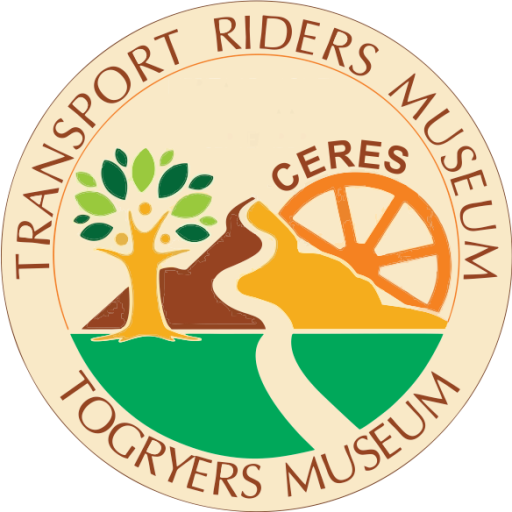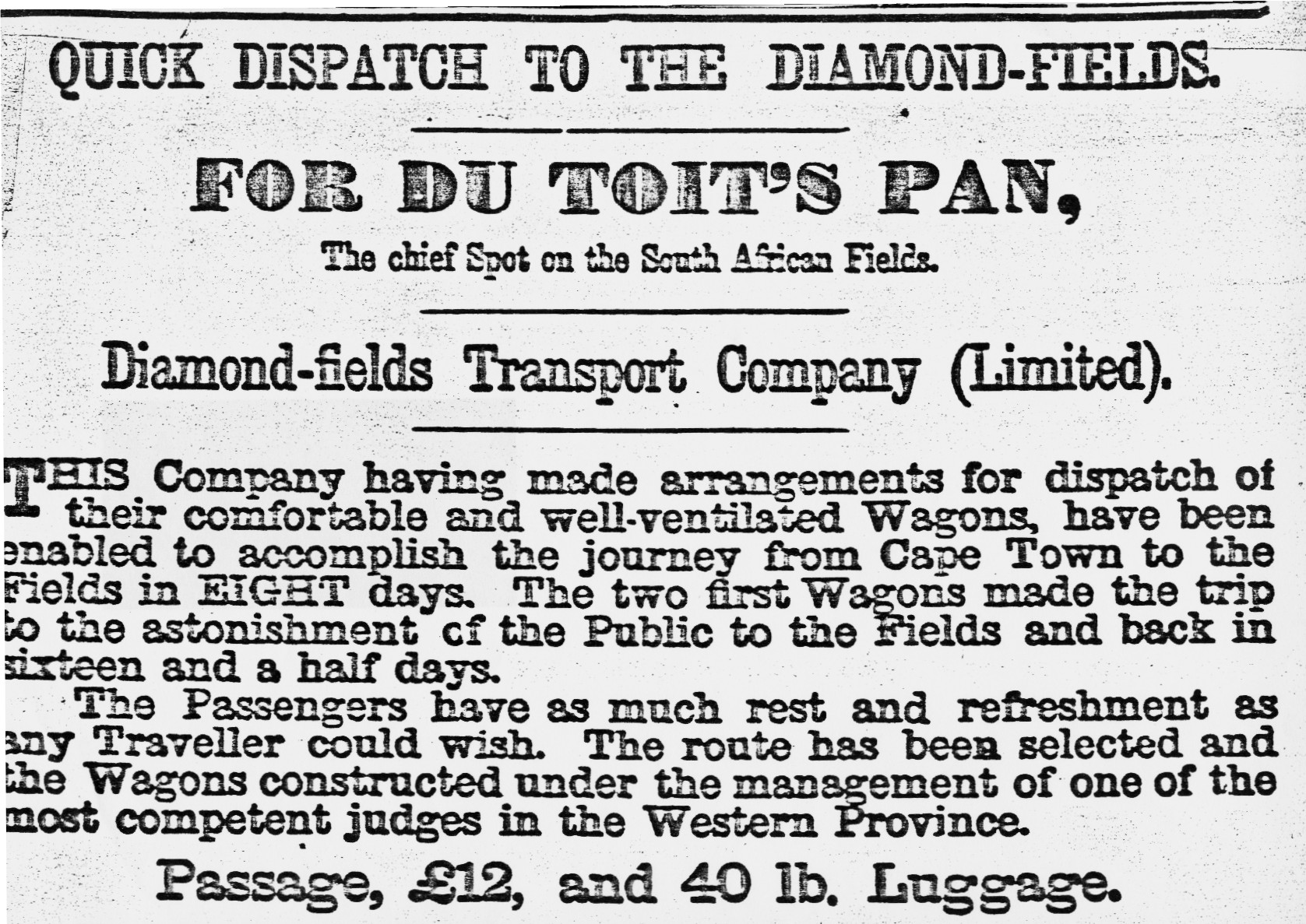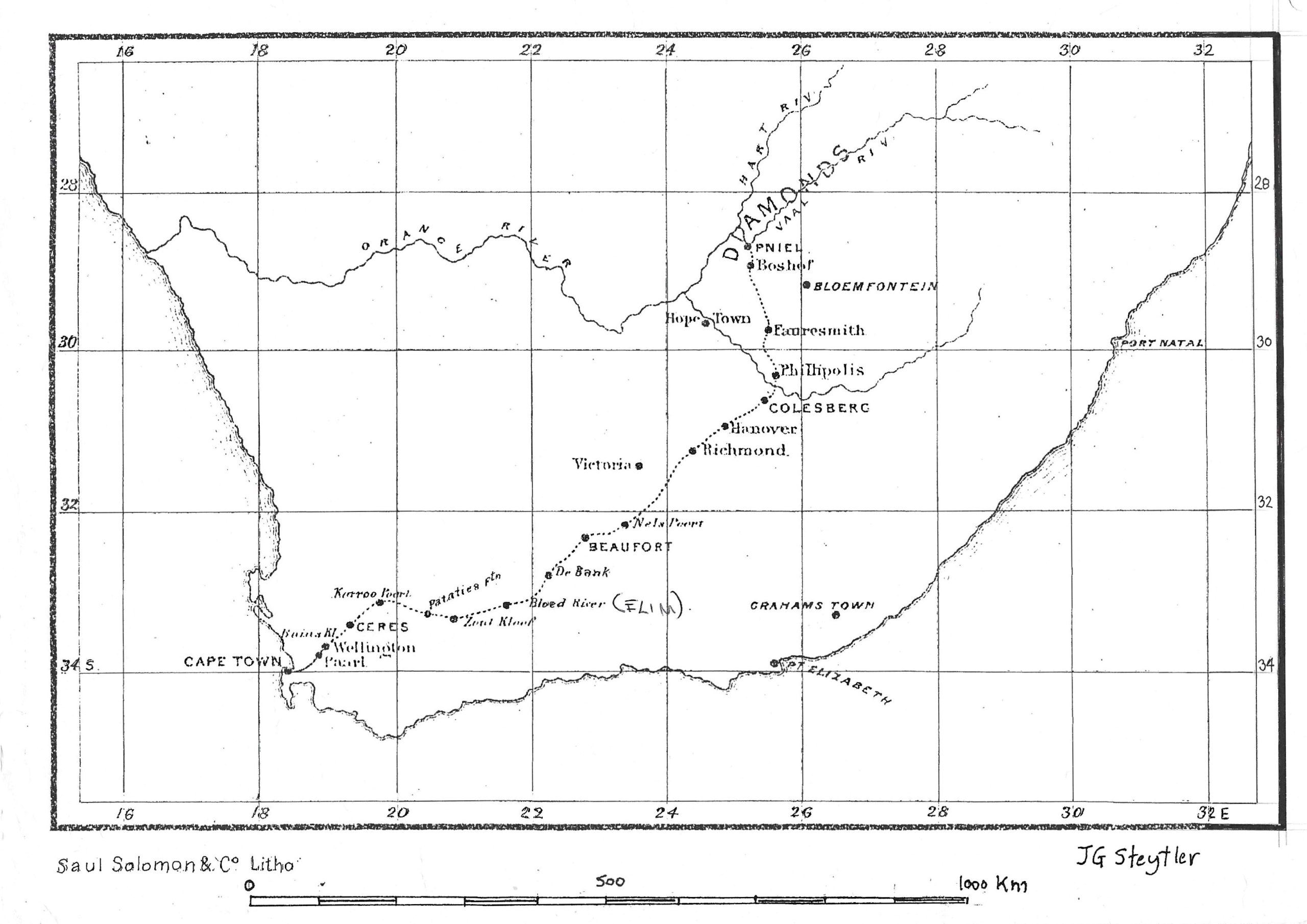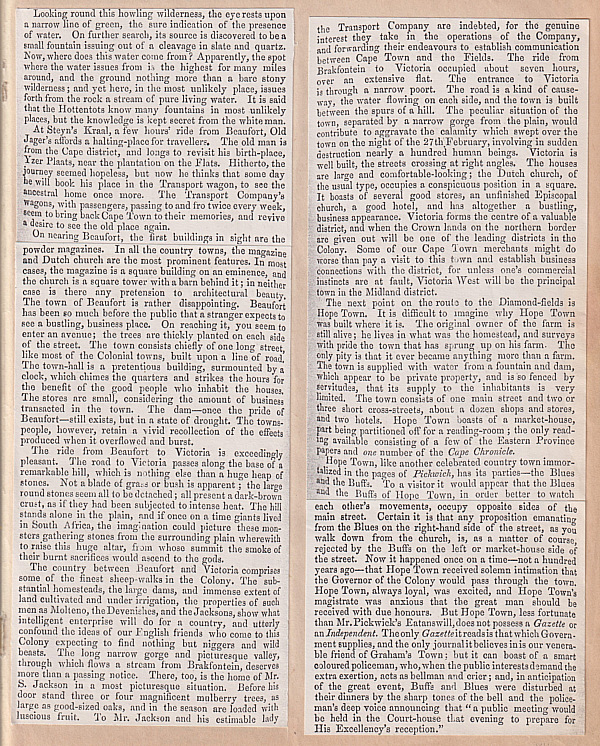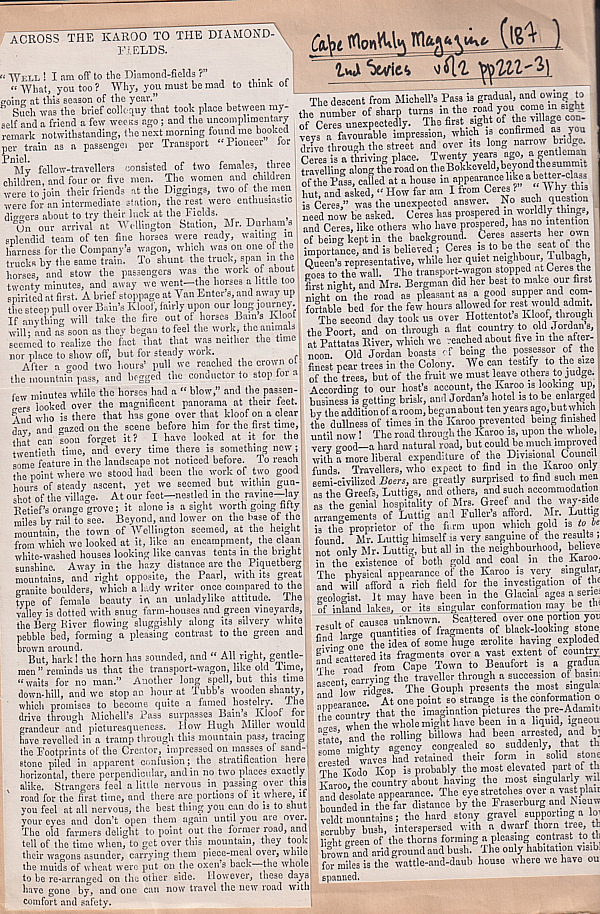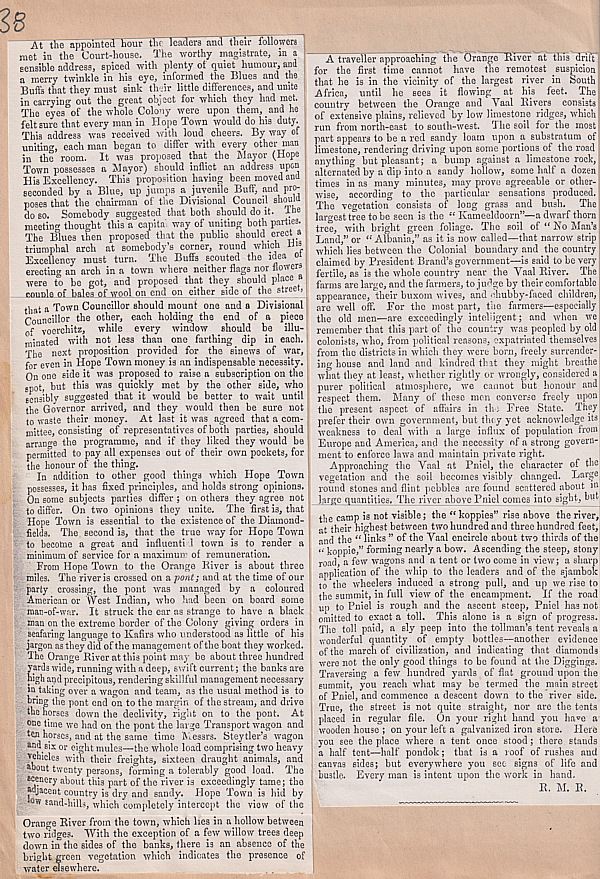The Route to the Diamondfields
The Route to the Diamondfields
From the Cape to Kimberley
The first discovery of diamonds in South Africa occurred in early 1867 on the land of a farmer, Daniel Jacobs, near the small isolated settlement of Hopetown on the Orange River in the Cape Colony, now the Northen Cape. This region of South Africa, near the junction of the Orange and Vaal rivers, was one of several destinations for thousands of European settlers (mainly Dutch and English) who traveled from the coast toward the interior of the country to farm and raise livestock. No one thought the region might contain diamonds, or thought to search for any precious stones. When mine diamonds were found the discovery set off a Kimberly diamond rush and prospectors from many countries flocked to the area and led to the Kimberley Diamond Rush.
Following the discovery of diamonds in Kimberley, the once sleepy village of Ceres experienced a surge in growth. The village turned into a bustling main road leading to the diamond fields. This newfound status revitalized trade and agriculture within Ceres. Heavily laden wagons, stagecoaches and a mix of mule and horse-drawn wagons moved through the town at all hours. Fortune-seekers journeying to and from Kimberley spent some time in Ceres, turning it into a vibrant marketplace for agricultural goods.
As early as 1870, Ceres was one of the main stations on the digger’s road to the North and the last important outpost before the desert-like journey through the Karoo had to be tackled. In 1870 the “Diamond Field Inland Transport Company” was founded by Adolph Arnholz. The company introduced a weekly service of operated horse-drawn passenger coaches between Cape Town to Du Toit’s pan for hundreds of travelers. Although the head office was in Cape Town, the directors were all of Ceres.
Over Michellspas, Theronsberg out and through the Karoopoort all kinds of goods had to be transported – from primitive mining machinery, trade goods, tobacco, skins, biltong, dry and fresh fruit, vegetables, wines and brandy. The transport riders therefore flourished, but smugglers and thieves also made their appearance and police patrols had to be increased.
